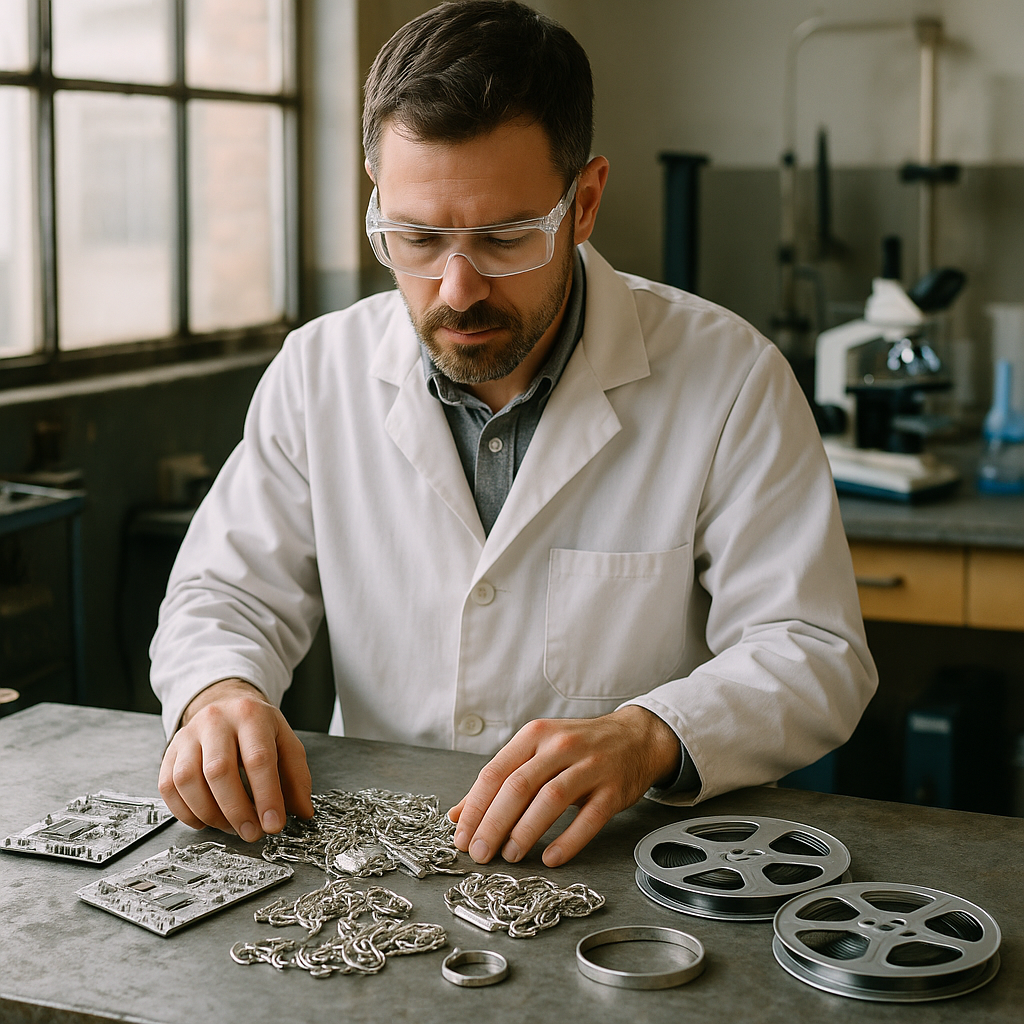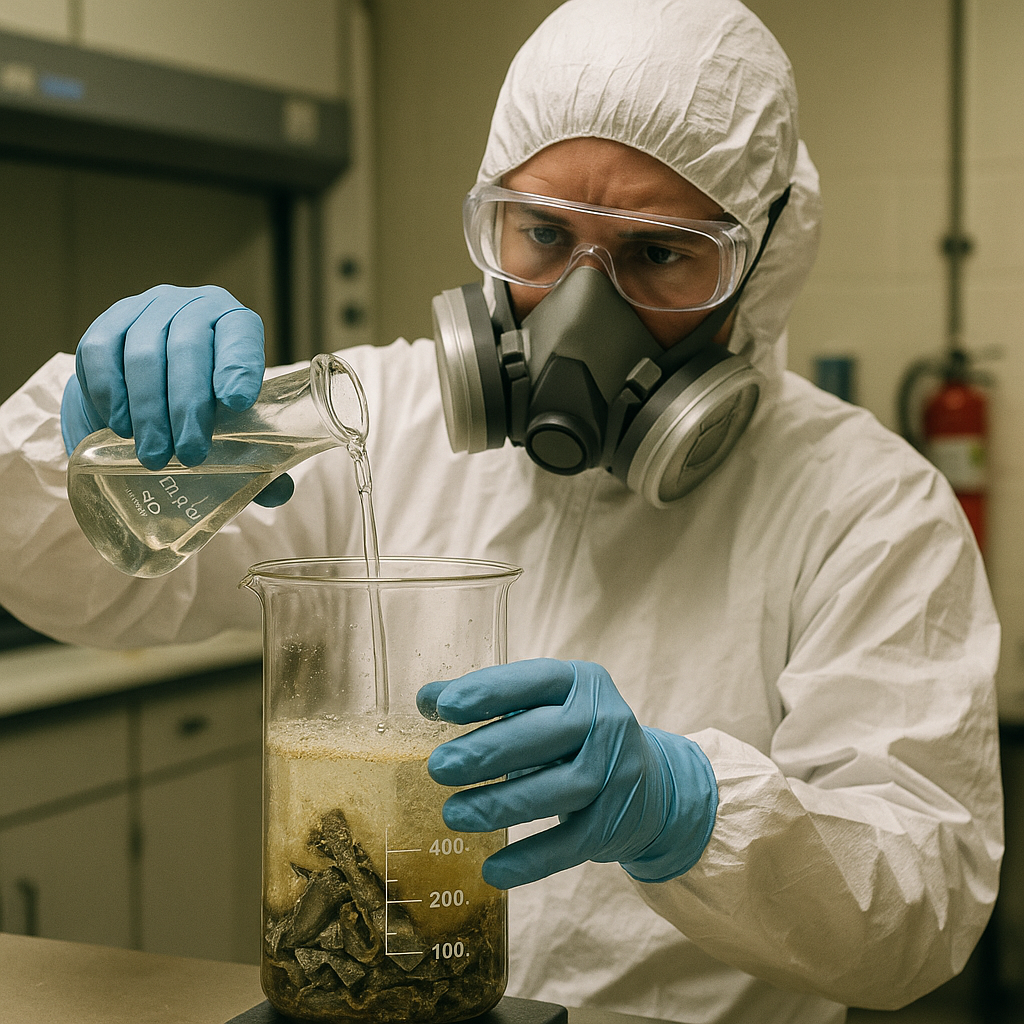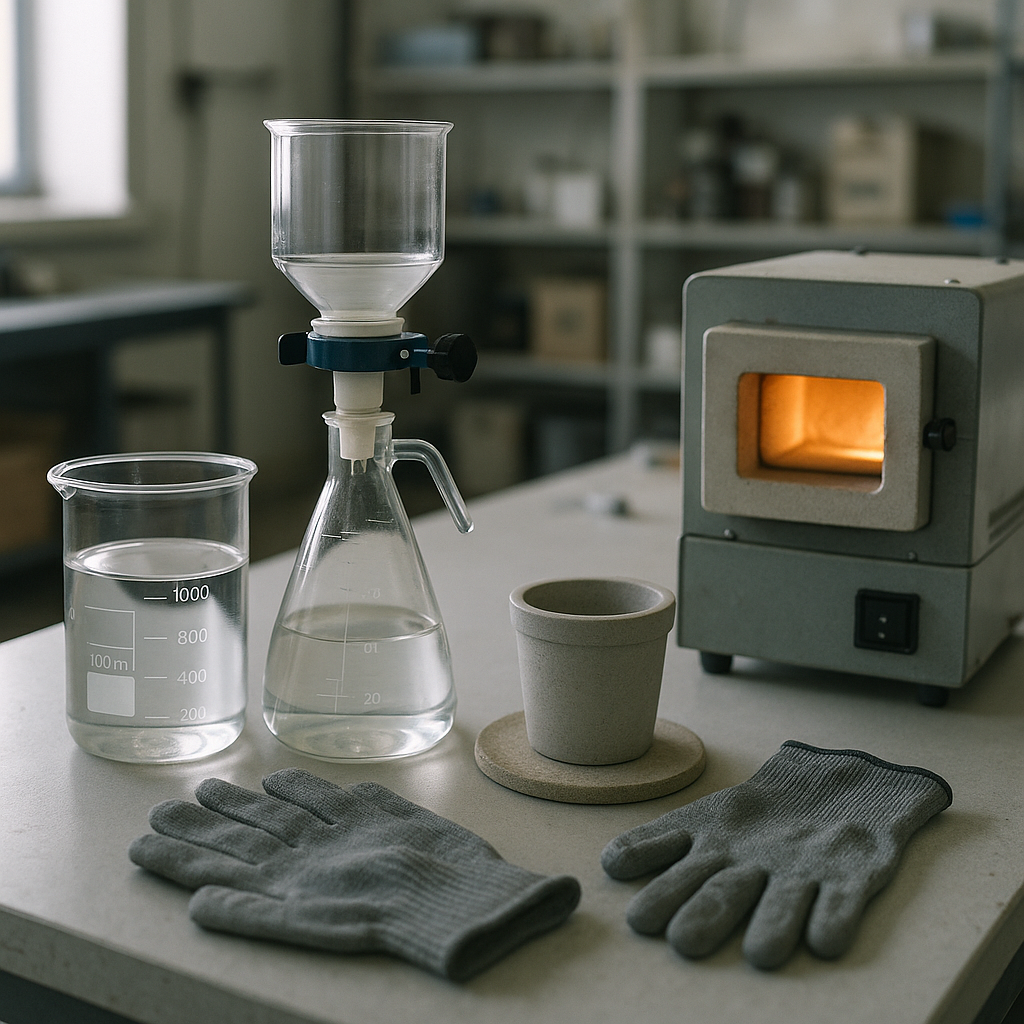5901 Botham Jean Blvd, Dallas, TX 75215
Silver Recovery Process from Scrap: Methods, Equipment, Benefits, and Challenges
October 8, 2025Did you know that millions of dollars in silver end up in landfills every year? Recovering silver from scrap is one of the most environmentally significant and economically valuable recycling processes in today’s circular economy. This specialized process extracts silver from items we discard daily, including old jewelry and electronic devices that have reached the end of their useful life.
The silver recovery process involves collecting, sorting, and processing silver-containing materials to extract this precious metal for reuse. Common sources include discarded jewelry, electronic waste (particularly printed circuit boards), photographic and x-ray films, industrial byproducts, and various manufacturing scraps. Each source contains different concentrations of silver, requiring specific extraction methods tailored to the material type.
Beyond financial incentives, silver recovery plays a crucial role in resource conservation. With mining operations becoming more costly as high-grade ore deposits diminish, recovering silver from waste streams reduces environmental impact while meeting growing industrial demand. This process helps divert valuable materials from landfills and reduces the need for environmentally intensive mining operations.
What are the Main Methods for Recovering Silver from Scrap?

Silver recovery from scrap materials is increasingly important due to dwindling natural reserves and rising demand across industries. Three primary techniques dominate silver recovery: mechanical, chemical, and thermal methods. Each approach offers distinct advantages depending on the type of scrap material being processed.
Mechanical Recovery Methods
Mechanical recovery is the most straightforward approach to retrieving silver from larger scrap items. This process begins with the physical separation of silver-bearing components without changing their chemical composition.
The first step typically involves crushing or grinding the scrap material to reduce its size. Materials are then sorted using techniques like sieving, magnetic separation, and density-based classification. For items like silver-plated objects, sandblasting can effectively remove the silver coating from the base material.
While mechanical methods require minimal chemical handling, they are generally less effective for materials with low silver content or where the silver is tightly bonded to other metals. These methods work best for visible silver components in items like jewelry or electrical contacts.
Chemical Extraction Techniques
Chemical recovery methods excel at extracting silver from complex materials where mechanical separation is not practical. These processes dissolve silver into a solution, allowing for its isolation from other materials.
The traditional nitrate process involves dissolving silver-bearing materials in nitric acid, creating silver nitrate, which can be processed to recover pure silver. Another common approach uses sulfamic acid combined with silver sulfamate and glutamic acid compounds, enabling higher current densities during electrolytic recovery.
For industrial applications, precipitation methods introduce chemicals that react with silver ions to form solid particles that can be filtered out. Electrolytic recovery uses electrical current to deposit silver onto cathodes from solutions containing silver compounds. Ion exchange and membrane filtration capture silver ions from dilute solutions, particularly useful for wastewater treatment.
Chemical methods typically achieve high recovery rates but require careful handling of potentially hazardous substances and proper waste disposal procedures.
Thermal Recovery Processes
Thermal recovery techniques use high temperatures to separate silver from other materials. These methods are particularly effective for processing large volumes of low-grade scrap.
Smelting is the most common thermal approach, involving heating silver-bearing materials to temperatures exceeding 1,000°C in specialized furnaces. The high heat causes silver to separate from impurities, creating a molten metal that can be cast into ingots. Flux materials are often added to bind with impurities, creating a slag that can be removed.
For materials like photographic film or x-rays containing silver halides, controlled incineration can recover silver from the ash. This approach requires precise temperature control and emission management systems to prevent environmental contamination.
While thermal methods can process large quantities efficiently, they consume significant energy and require specialized equipment to manage emissions.
| Method | Main Process | Advantages | Disadvantages | Recovery Efficiency |
|---|---|---|---|---|
| Electrolytic Recovery | Uses electrical current to deposit silver onto cathode | Yields virtually pure silver; low refining/shipping costs | Requires significant capital; not suitable for dilute solutions | 95% – 99.5% with ion exchange |
| Metallic Replacement | Silver is displaced by another metal, usually steel wool | Low capital expenditure; simple setup | Inefficient with dilute solutions; lower recovery rates | Up to 95% |
| Chemical Precipitation | Uses reagents like sodium sulfide to precipitate silver | Can remove nearly 100% of silver | Handling large chemical volumes; requires pH control | Usually 0.5 to 1 mg/L of silver remains |
| Ion Exchange | Exchanges ions to capture silver from solutions | Effective for dilute solutions; high recovery | Complex setup; may require off-site refining | Over 98% recovery |
Selecting the Optimal Recovery Method
The choice between recovery methods depends on several factors. Source material composition is crucial: mechanical methods work well for visible silver components, while chemical processes excel with complex mixtures. Equipment availability and environmental regulations also influence which technique is most appropriate for a specific recovery operation.
Many commercial recycling operations combine multiple methods to maximize silver recovery. For example, mechanical preprocessing might remove non-silver components before chemical extraction recovers the remaining silver content. This integrated approach optimizes both recovery rates and operational efficiency.
As technology advances, new hybrid recovery techniques continue to emerge, offering improved efficiency while reducing environmental impact. These innovations help ensure that silver recycling remains both economically viable and environmentally responsible.
How is the Chemical Process for Silver Recovery Performed?

Chemical silver recovery is an efficient method for reclaiming silver from various waste materials. This process involves specific chemical reactions to dissolve silver-containing materials and then separate the precious metal in a purified form. Here is a step-by-step look at this process.
Dissolution Phase Using Nitric Acid
The first stage involves dissolving silver-bearing materials in nitric acid, creating silver nitrate in solution, which is completely soluble in water. The reaction is as follows:
When nitric acid contacts silver metal, it creates silver nitrate (AgNO₃) and hydrogen gas. During this reaction, the silver transitions from solid form into an aqueous solution. This process is effective on sterling silver, silver-plated items, and other silver-containing materials.
Safety is paramount during this phase. Conduct the process in a well-ventilated area, as toxic nitrogen dioxide fumes are produced. Essential protective equipment includes chemical-resistant gloves, splash goggles, and a lab coat or apron. Remember, always add acid to water slowly, never water to acid, to prevent dangerous splashing.
Precipitation Phase Using Salt
Once fully dissolved, the silver is precipitated out of solution using common table salt (sodium chloride). When added to the silver nitrate solution, salt creates silver chloride, which is insoluble in water.
The chemical reaction is: AgNO₃ + NaCl = AgCl + NaNO₃. Silver chloride appears as a white, cloud-like precipitate that settles to the container’s bottom. Add only a slight excess of salt solution to ensure complete precipitation without adding unnecessary impurities.
Thoroughly mix the solution after adding the salt, and allow the silver chloride to settle completely. The clear liquid can then be carefully decanted, leaving the silver chloride precipitate behind.
Filtration and Purification
The next critical step involves filtering the silver chloride precipitate to remove any remaining solution and impurities. For small-scale operations, standard laboratory filter paper or coffee filters can be used. The precipitate is repeatedly washed with distilled water until washings are neutral, indicating acid residue removal.
In industrial applications, specialized filtration systems with pressure filters provide a more efficient separation. This stage is essential for ensuring high purity in the recovered silver.
| Method | Principle | Advantages | Disadvantages |
|---|---|---|---|
| Electrolytic Recovery | Electroplating silver onto a cathode using direct current. | Produces high-purity silver; enables reuse of fixer; suitable for silver-rich solutions. | Requires significant capital investment and energy. |
| Metallic Replacement | Recovers silver by replacing it with iron using steel wool or similar media. | Low capital cost; simple operations. | Lower recovery efficiency for low silver concentrations; less effective for dilute wastewater. |
| Chemical Precipitation | Uses chemicals like sodium sulfide to precipitate silver as a solid. | High recovery efficiency; can treat a wide range of solutions. | Involves handling large amounts of chemicals; precipitate separation can be challenging; requires careful pH control. |
| Ion Exchange | Exchange of silver ions with resin ions; requires regeneration. | Effective for dilute solutions. | Requires proper resin selection and flow rate management. |
| Reverse Osmosis | Uses high pressure to separate silver from water through a membrane. | Removes salts and organics; useful for treated rinse water. | Membrane fouling and biological growth issues. |
Reduction to Metallic Silver
The collected silver chloride must be converted back to metallic silver, typically using zinc or iron to displace the silver through a reduction reaction. The chemical equation is: Zn + 2AgCl = ZnCl₂ + 2Ag.
Granulated zinc is thoroughly mixed with moist silver chloride for effective reduction. A small amount of sulfuric acid may initiate the reaction if it doesn’t start spontaneously. The reaction generally completes within four hours, converting the white silver chloride to dark gray metallic silver powder.
After the reduction is complete, any excess zinc is dissolved by adding more dilute sulfuric acid. The silver is then thoroughly washed to remove traces of zinc compounds and acids.
Final Processing
The recovered silver powder is dried, typically in a low-temperature oven. Once dry, it can be melted in a crucible at approximately 962°C (the melting point of silver) to form a solid button or ingot of silver.
For higher purity, further refining may be necessary. The final product should be nearly pure silver, suitable for reuse in jewelry, electronics, or other applications.
Proper ventilation is essential during the melting process, as any remaining chemical residues may emit fumes. Heat-resistant gloves and eye protection are necessary when working with molten metals.
Environmental Considerations
The chemical silver recovery process generates waste solutions requiring proper disposal. These solutions typically contain nitrates, chlorides, and traces of heavy metals. Never pour these wastes down regular drains.
Most localities have specific regulations for disposing of such chemical wastes. Collect spent solutions in appropriate containers and arrange for professional disposal through licensed waste management services.
By following these steps carefully and prioritizing safety and environmental responsibility, the chemical silver recovery process can effectively reclaim valuable silver from waste materials that would otherwise be discarded.
What Equipment is Needed for Silver Recovery from Scrap?

Silver recovery from scrap materials requires specialized equipment to ensure both safety and efficiency. This process involves handling corrosive chemicals and precious metals, making proper gear essential for successful recovery operations.
Protective Safety Equipment
Safety is the top priority when recovering silver from any scrap material. A complete set of personal protective equipment includes chemical-resistant gloves to prevent skin contact with acids and other reagents. Protective goggles or a full-face shield are essential as they shield the eyes from potential splashes.
A lab coat or chemical-resistant apron protects your clothing and skin from accidental spills. When working with acids like nitric acid, utilizing a fume hood or an appropriate respirator is crucial to prevent inhaling toxic fumes.
Processing Containers and Vessels
The choice of containers significantly impacts the recovery process. Heat-resistant glass beakers and flasks are ideal for chemical reactions, while plastic buckets are suitable for washing and rinsing processes. All containers should be clearly labeled and dedicated exclusively to silver recovery to prevent cross-contamination.
For larger operations, specialized reactors with proper seals may be necessary. These vessels help control chemical reactions and minimize exposure to harmful vapors. Having containers of various sizes allows for flexibility throughout different stages of the recovery process.
Chemical Reagents
Several key chemicals are essential for extracting silver from scrap. Nitric acid serves as the primary dissolving agent for silver in most recovery methods. Sodium chloride (table salt) or hydrochloric acid is needed to precipitate silver as silver chloride.
For the reduction process, reagents such as glucose, sodium hydroxide, or zinc may be required, depending on your chosen method. Each chemical must be stored properly according to safety guidelines, with secondary containment systems for acids and bases to prevent dangerous mixing in case of spills.
Filtration and Separation Equipment
Effective filtration systems separate valuable silver compounds from waste materials. Filter paper, filter funnels, and vacuum filtration setups speed up the process and improve recovery rates. Centrifuges can further enhance separation in some applications.
For washing silver compounds, spray bottles with distilled water help rinse precipitates thoroughly. Multiple filtration stages often yield purer end products, so having several filtering setups is advantageous.
Melting and Refining Tools
The final stages of silver recovery require equipment for melting and casting. A melting furnace capable of reaching at least 1000°C is necessary for transforming recovered silver powder into solid form. Crucibles made of graphite or ceramic withstand the high temperatures needed for melting silver.
Ingot molds allow for casting the melted silver into manageable forms. Tongs and heat-resistant gloves protect operators during the high-temperature phases of the process. A digital scale with precision to at least 0.1 gram helps track recovery yields accurately.
Specialized Recovery Systems
For certain silver recovery methods, specialized equipment may be required. Electrolysis setups use electrodes and power supplies to recover silver directly from solution. These systems often produce higher purity silver with less chemical waste.
Precipitation systems can be automated for larger operations, ensuring consistent results. Recovery cartridges offer a simplified approach for photographic waste, though with lower yields than more intensive methods.
Testing and Analysis Tools
Quality control equipment helps verify the purity of recovered silver. Test kits for silver content provide quick assessments during the process. For more precise analysis, specific gravity testing equipment or professional assay services may be necessary.
pH meters monitor solution conditions during chemical processing stages. Maintaining optimal pH levels improves recovery rates and reduces waste. Visual inspection tools like magnifiers help identify impurities in the final product.
When selecting equipment for silver recovery, prioritize durability and chemical resistance over cost. The corrosive nature of many recovery processes can quickly damage inferior equipment, potentially creating dangerous situations and reducing recovery efficiency.
What are the Benefits and Challenges of Silver Recovery from Scrap?

Silver recovery from scrap materials offers significant economic and environmental advantages while presenting technical and operational challenges. Understanding both sides of this process is crucial for organizations considering implementing silver recycling programs.
Economic Benefits of Silver Recovery
The financial incentives for recovering silver from scrap are substantial. Silver is a precious metal with consistent market demand across multiple industries. Recycling silver considerably reduces production costs compared to mining and refining raw ore. Organizations can save 60-90% in resource costs through secondary production versus primary mining methods.
Recovery also provides a steady secondary income stream. For example, dental facilities that collect and recycle silver amalgam can transform what was once waste into valuable returns. The recycled silver retains its original properties without degradation, making it as valuable as newly mined metal for manufacturing purposes.
Environmental Advantages
The environmental case for silver recovery is compelling. Every ounce of recycled silver conserves approximately 19 tons of waste from mining operations. The process also saves roughly 700,000 BTUs of energy and prevents about 250,000 pounds of CO2 emissions per ounce recovered.
Silver mining disrupts landscapes, contaminates soil, and affects water systems. By recycling, we minimize these environmental harms and preserve irreplaceable natural resources. This conservation aspect is increasingly important as industries face growing pressure to adopt sustainable practices and reduce their carbon footprint.
Technical Challenges
Despite its benefits, silver recovery presents several technical hurdles. A significant challenge is maintaining purity levels. Recycled silver often contains contaminants from previous applications, such as paint residues, surface coatings, or mixed alloys. These impurities can lower the quality of the recovered metal, potentially limiting its use to lower-value applications rather than high-spec electronics or medical equipment.
Recovery complexity varies based on the source material. Silver from photographic fixer solutions requires different processing methods than silver embedded in electronic components or dental amalgam. Each source presents unique chemical challenges that demand specialized recovery systems and expertise for efficient extraction.
Safety and Regulatory Considerations
The recovery process often involves potentially hazardous chemicals and procedures. Organizations must implement proper safety protocols to protect workers handling these materials. For example, recovering silver from photographic fixer solutions may involve chemicals that require careful handling and appropriate personal protective equipment.
Regulatory compliance adds complexity. Waste disposal regulations vary by location and generally require careful documentation and management of byproducts from the recovery process. Facilities must stay current with changing environmental regulations to ensure compliance.
Operational Considerations
The economics of silver recovery can fluctuate with market conditions. When silver prices drop, the return on investment for recovery operations may diminish, potentially making the process less financially attractive. Organizations must weigh these market variables against the consistent environmental benefits.
Traceability is another emerging consideration. Manufacturers increasingly demand documented performance and provenance before incorporating recycled metals into their supply chains. This requires implementing systems that can verify the origin, composition, and quality of recovered silver to meet specifications for high-value applications.
| Source Type | Method |
|---|---|
| X-Ray and Photographic Films | Chemical, Thermal |
| Electronic Components | Mechanical, Chemical |
| Industrial Sludge and Solutions | Chemical |
| Jewelry and Scrap Silver | Mechanical, Thermal |
| Dental Waste | Chemical |
Despite these challenges, technological innovations are improving recovery processes. Advanced sorting technologies, precise alloy recognition systems, and selective refining methods enhance both the efficiency and quality of recovered silver. These improvements continue to make silver recovery more accessible and economically viable for a wider range of organizations.
Conclusion: The Future of Silver Recovery from Scrap
The global demand for silver continues to increase across various industries, including electronics, solar energy, automotive, and medical sectors. This precious metal remains indispensable in many applications due to its exceptional conductivity and chemical stability. As global reserves are strained and environmental concerns escalate, silver recovery from scrap has become a crucial strategy for sustainable resource management.
Recycling technologies are advancing rapidly, making silver recovery more efficient and environmentally friendly. Enhanced processes like automated sorting systems, improved metal analysis techniques, and innovative hydrometallurgical approaches are revolutionizing how we extract silver from e-waste and other scrap sources. These technologies not only reduce the environmental footprint of metal production but also help conserve natural resources by decreasing reliance on traditional mining operations. The future of silver recovery lies in these sustainable methods that balance economic viability with ecological responsibility.
For your recycling needs, contact Okon Recycling at 214-717-4083. Our team of experts can help you implement effective silver recovery methods that maximize both environmental and economic benefits.
